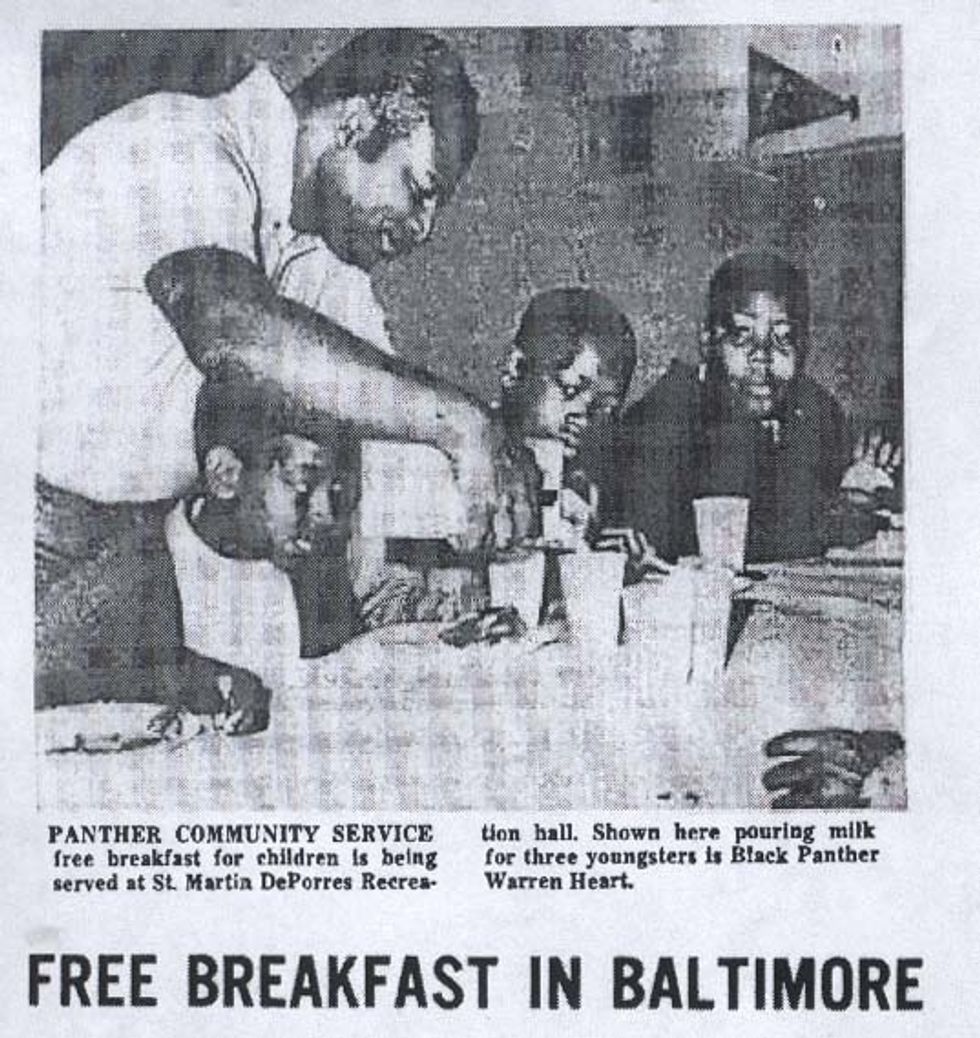Food is intrinsic to our lives, and not just in the fundamental sense; it provides us much more than simple sustenance. Food is a comfort, it is security, and it is pleasure. Food is symbolic of social status, religious significance, and traditions. Across the globe, and throughout time, it has been one of the cornerstones of culture. What we choose to eat, how we prepare it, serve it, and even how we eat our foods are all elements greatly affected by our own distinct cultural legacies.
For Black folk in the U.S., food is integral to our culture. A few cultural dishes include: candied yams, black-eyed peas, fried chicken, potato salad, cornbread, hot-water cornbread, grits, collard and mustard greens, pound cake, head cheese, hushpuppies, banana pudding, ham hocks, sweet potatoes, hog maw, okra, oxtails, pigs’ feets, peach cobbler, neck bones, and of course, red drink. All these dishes fall under the umbrella of — soul food.
I can’t begin to remember all the memories that soul food conjures up. Many of them are (almost) universal when growing up Black in the U.S.: sitting at your grandma’s feet, helping her pick greens; or, running out the house to breath when it was time to cook the chit’lins; sneaking a piece of something, anything, because you’ve been waiting for at least four hours to chow down, eating at the kids table with your cousins, and asking for another plate because whoever made that mac & cheese put their foot in it. And let’s not forget the itis.
Though our relationship with food dates further than when our ancestors were seized and snatched away to this stolen land, U.S. slavery forced us to redefine that relationship. From the early years of slavery until the passing of the 13th amendment, enslaved peoples of African descent only received a small number of rations to live off of for a week—five pounds of a starch (rice, sweet potatoes, or cornmeal); a few pounds of dried, salted, or smoked meat (whatever was the cheapest), and a jug of molasses. Anything else they ate had to be acquired by other means, such as hunting, gardening, foraging, fishing, and/or raising livestock. The enslaved carried with them farming knowledge passed down from West Africa, as well as newer knowledge shared with them by their slavers, poor white neighbors, and, most importantly, the indigenous peoples of the area.
The culture of Southern indigenous populations (Cherokee, Chickasaw, Choclaw, Creek, and Seminole) is the basis of many southern cuisines, including soul food.
“To a far greater degree than anyone realizes, several of the most important food dishes that the Native Americans of the southeastern U.S.A live on today is the "soul food" eaten by both Black and White Southerners. Hominy, for example, is still eaten: Sofkee lives on as grits; cornbread [is] used by Southern cooks; Indian fritters -- variously known as "hoe cake" or "Johnny cake"; Indian boiled cornbread is present in Southern cuisine as "corn meal dumplings" and "hush puppies"; Southerners cook their beans and field peas by boiling them, as did the Native tribes; and, like the Native Americans, Southerners cured their meats and smoked it over hickory coals...” — Charles Hudson, The Southeastern Indians
From their cultures, came corn — one of the principal staples of the Southern diet — either ground into meal or used to make hominy in a Native American process called nixtamalization. Corn was implemented into numerous dishes, like grits and cornbread. It was even used to make liquors such as whiskey and moonshine. Additionally, the entirety of an animal is used for cooking, aside from its meat. This is still a tradition carried on today, in dishes like chitterlings (more commonly referred to as chit’lins), fried small intestines of a hog. Many learned the cooking methods of the Southern Native Americans, though styles of preparation did vary, especially concerning the enslaved, as they combined this with their West African heritage.
A normal day for the (field) slave was a breakfast mixture of buttermilk and crumbled cornbread. It was then poured into a trough, similar to those that livestock eat from. Later in the day, they dined on a “dinner” of boiled vegetables seasoned with meat and red pepper for flavor. The end of the day brought the late-evening supper — leftovers from dinner and cold cornbread. It was only on the weekends, when the work slowed, that the enslaved were given access to prestigious ingredients and dishes involving the use of processed white flour and refined white sugar.
There was no freedom to choose what we ate; our food was only what we were given or allowed to eat. Dining on simpler, poverty food during the week and having the prestige food during the weekend, was the foundation of what we think of soul food today. During Reconstruction, slaveowners, under the guise of a different name (sharecropping), continued the act of slavery. Its rise, along with the power of the Black Church, had a great effect on the evolution of soul food.
The prestige food, the best of the best, was always showcased at holidays, Emancipation celebrations, and Black church get-togethers. The get-togethers at church were the most common and indispensable to the Black community. There they served foods like fried chicken, fried fish, red drinks, and watermelon. Sharecropping forced the continuation of the slavery pattern of eating poverty food during the week and special occasion food on the weekends with church social gatherings.
“Rural Blacks consumed a diet similar to what they had during slavery—heavy on seasonal vegetables, very little meat, and variations of cornbread and water with increasing amounts of processed food.”
— Adrian, “The Soul Food Scholar” Miller
Following reconstruction, many Blacks could no longer bear the economic oppression and racism characteristic of the interior Deep South, that landlocked area of mainly Georgia, Mississippi, and Alabama. The best solution was to leave, so, over a span of seven decades, six million Black folks, including my maternal and paternal families, did just that. This was known as the Great Migration.
Upon arrival to our new homes, which unfortunately were just as oppressive and racist, we tried to reconstruct and build community. Food was a crucial factor to accomplishing both. In soul food, we were able to find familiarity in unfamiliar northern cities.
Migrants could afford to eat prestige food throughout the week, they no longer had to save it for special occasions or the weekends. After World War II, the economic situation of Black folks began to improve. Social mobility, though arduous and rare, was a possibility, and for a lucky few, it was a reality. It was during this time that a new tradition emerged—Sunday dinner with extended family, with a kitchen full of prestige foods.
Though in modern times, we refer to Black cuisine as soul food, it wasn’t until 1963 that the term was popularized. Alex Haley was the one to coin the term with his record of Malcolm X’s life story. Malcom X saw soul food as a dual representation of southernerness and commensality. However, upon entering the mainstream, the meaning of soul food splintered almost immediately.
To many, it was simply a new label for the very best home cooking passed down through generations.
Black Power activists saw soul food as a powerful tool to unify Black people across various classes, geographical locations, and life experiences. To them, soul food was distinctly Black, and not to be likened with “southern food”, which was distinctly white.
Others, interpreting the same cultural source material, denounced mainstream soul food as “the master’s chicken-and-pork laden leftovers.” True soul food was the long-established fish and vegetables diet of our West African ancestors, featuring items like okra, yams, sorghum, millet, and black-eyed peas.
Today, we have colloquialized the term “soul” to mean “Black” and the term “southern” to mean “white.” Generally, southern food is blander, while soul food is notorious for its bursts of flavors and expert use of seasonings. However, both cuisines have had major contributions from Black people.
Now, in 2017, soul food, has been reinvented many times over, with new styles of preparation popping up every day, including vegetarian versions and even vegan! Though it may mean different things to different people, soul food still remains at the heart of the Black community.






















